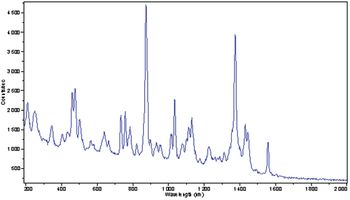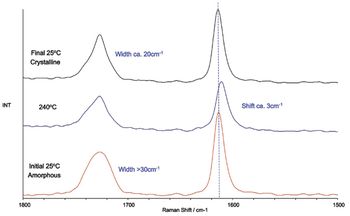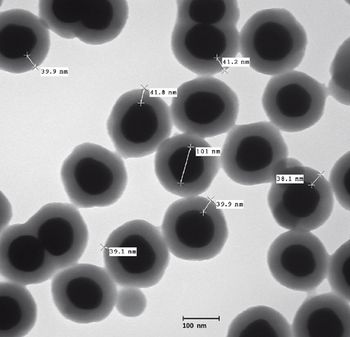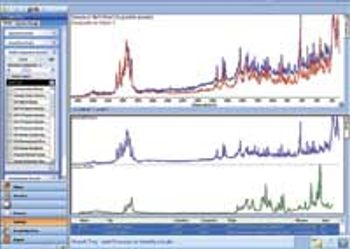
Special Issues
Manufacturing control of pharmaceutical solids requires routine measurement of content uniformity. Because of the high information content in Raman spectra, it has been considered a candidate technology for making these measurements.

Special Issues
Manufacturing control of pharmaceutical solids requires routine measurement of content uniformity. Because of the high information content in Raman spectra, it has been considered a candidate technology for making these measurements.

Special Issues
Polymer blends are designed to address the needs of different industries, and in many cases the relationship between structure, morphology, and material properties is indispensable for optimization of material design.

Special Issues
Raman spectroscopy and differential scanning calorimetry (DSC) are powerful techniques in their own right. Combining the two techniques allows one to combine the chemical and structural information of Raman with the temperature and energetic information of DSC. This allows us to develop a greater understanding of the material. Applications from polymeric and pharmaceuticals are discussed as examples of how this can help the analyst.

Special Issues
The authors discuss the use of a field-deployable Raman instrument for rapid identification of chemical and biological pathogens.

Special Issues
Miniature spectrometers revolutionized the spectroscopy market more than 15 years ago and became a key factor in the creation and steady growth of the photonics field. Today these spectrometers are becoming an important part of the new market of field-deployable analytical instruments used for materials identification based on Raman spectroscopy. Just as before, these spectrometric photonic engines are key factors on reducing the cost and improving the flexibility of applications of a traditionally expensive and rigid vibrational spectroscopy method. Raman spectroscopy is becoming an affordable tool used for applications ranging from homeland security to green energy research and development, either at a laboratory, a crime scene, or a biodiesel manufacturing facility.

Special Issues
There are many situations in which it would be highly desirable to apply the benefits of Raman to larger volumes of solid material such as powders, tablets, and composites. Raman benefits such as minimal sample preparation, the ability to provide rich information on both organics and inorganics, and its ability to measure through glass and plastic packaging make it highly amenable to these kinds of samples.